Once you learn how to clean a gas grill properly, your gas grill can last you for years.
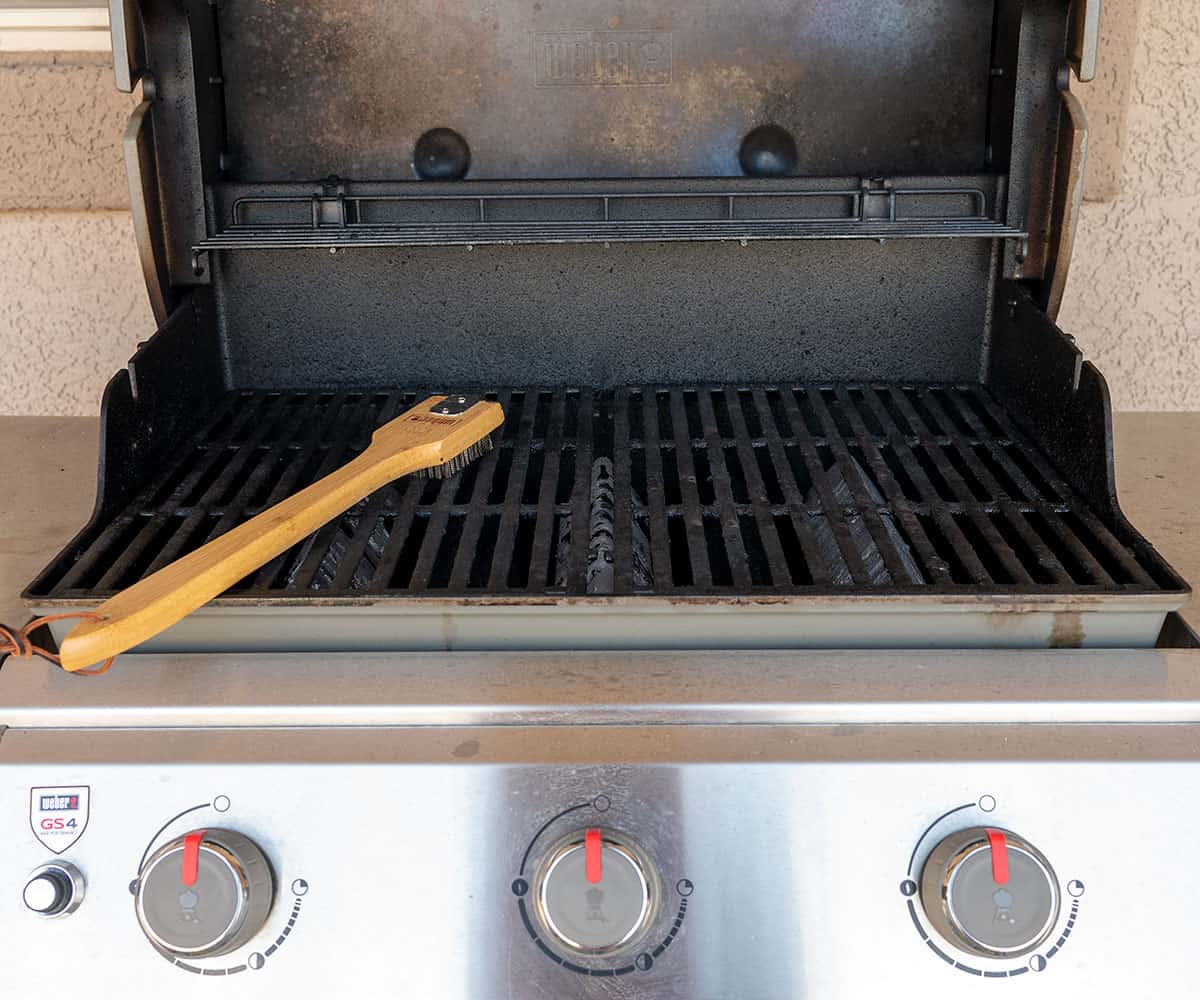
Save this BBQ Tip
Enter your email, and I’ll send this link directly to your inbox. Plus, you’ll get new BBQ recipes and tips weekly.
Table of Contents
What to Clean After Every Cook
There’s nothing worse than opening up your grill only to find food caked on the grates leftover from the last cook. You can easily avoid that by taking one extra step after grilling up a meal.
Whether it’s steaks, burgers or hot dogs, once you remove your food from the grill, turn the burners up to high heat and let the grill continue to burn for 5 – 15 minutes. Set yourself a timer, so you don’t forget.
Then, run a wire brush along all of the hot grates to force off any cooked on food residue. If you find that some pieces are really caked on, use a spray bottle filled with water and spritz water on the grates.
Then, use the grill cleaner again to work off the food particles. Sometimes, you’ll find there are some really stubborn pieces, so I recommend purchasing a grill brush that has a metal scraper on the end.
Run the metal edge along the side of the grate to scrape on the residue.
There’s no need to scrape the grates back to the original metal. You just need to clean off the residue, so it doesn’t stick to your next meal.
If your grates are cast iron and they look dry or like they’re starting to rust, brush them with a light coating of vegetable oil.
PRO TIP: When using a wire brush, be careful. Sometimes the wire bristles may come off of the brush. It's important to inspect your grill grates to make sure none are left behind. As an alternative, you can use a brush with nylon bristles or a bristle-free scraper.
How to Clean the Outside of a Gas Grill
It’s best to clean the outside of the grill soon after you cook. Otherwise, grease will start to collect dust and could attract bugs.
Once the grill cools down, wipe the exterior, including the lid, down with a damp cloth or paper towel to remove any grease splatters. If you attempt to do this while the grill is still warm, be sure to wear gloves to protect your hands from the heat.
If you have stubborn grease spots, use a little dish soap and water with a rag or sponge.
If you have a stainless steel exterior, I recommend using a cleaning product designed especially for that type of metal. Personally, I use the Sprayway stainless steel cleaner with a microfiber cloth.
What to Clean After Every 3-5 Cooks
The interior of a gas grill includes cooking grates, burners and usually some sort of burner deflector or flavorizer bars. As you cook food on the grill, fat and ingredients drip between the grates, onto the bars and into the cavity of the grill.
Beneath all of those components, gas grills usually have a grease collecting pan and/or a pull-out tray that catches debris. We’ve all lost a grilled asparagus or two between the grates. This is where it goes.
To make cleanup a breeze, use a disposable drip pan to line the grease collector and place a sheet of foil over the tray.
After 3-5 cooks, it’s a good idea to check both the drip pan and the tray and replace the pan or foil, as needed.
This is also a great time to check to see how much gas is left in your propane tank.

What to Clean Once or Twice a Year
Once or twice a year, depending on how often you use your grill, you’ll want to do a thorough grill cleaning.
You can either do this at the end of grilling season, so your grill is fresh and ready or do it at the start of grilling season, when the weather is ideal. Or if you’re like me, you grill year round, so just take care of it when it’s dirty.
This can be a kind of messy job, so I recommend moving your grill off the patio to the grass or a rocky area where you don’t mind greasy BBQ debris bits flying around.
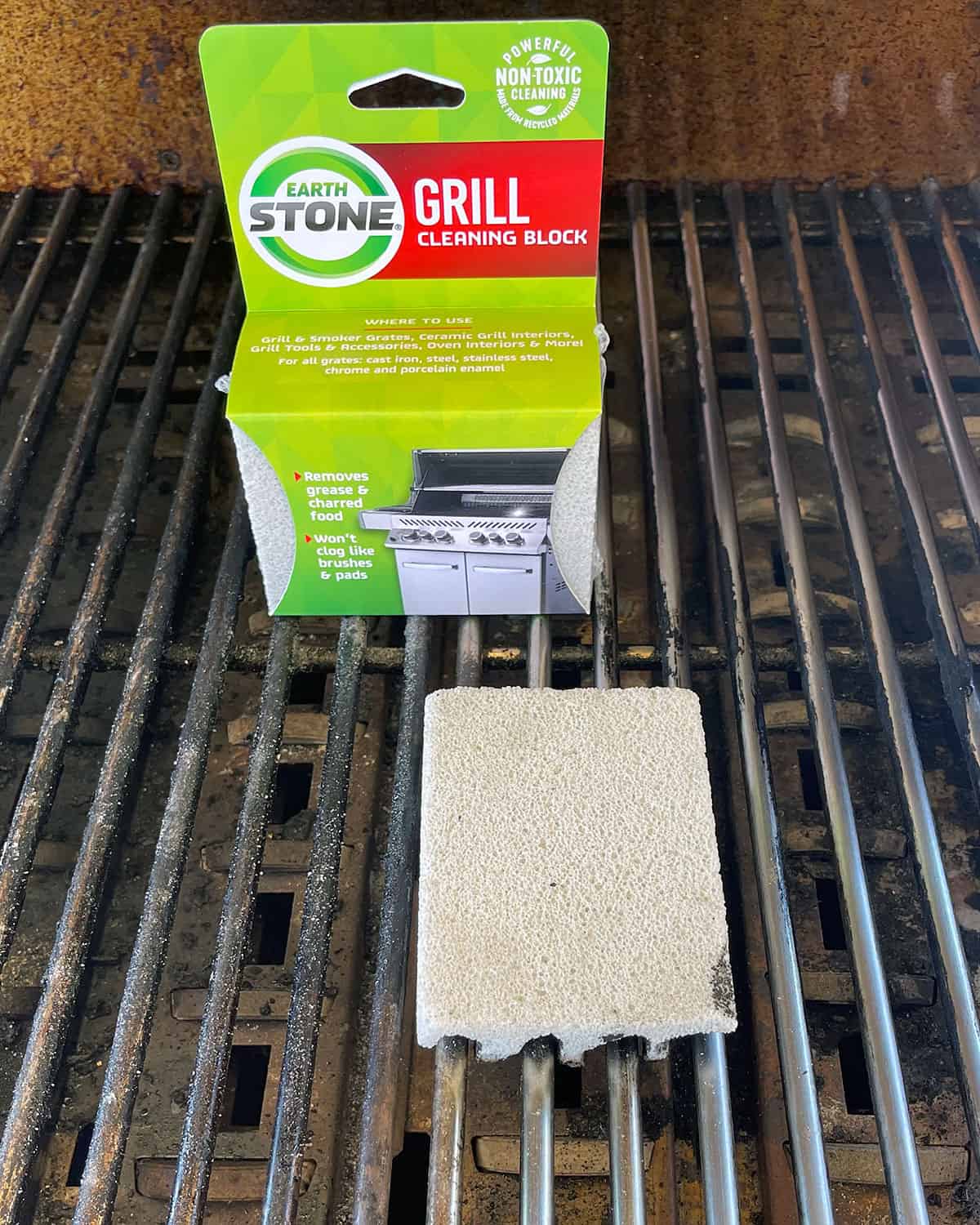
Start by using a grill stone on the grill grates. It will likely take one whole stone to clean all of the grates, but get two just in case. This will remove most if not all of the build up that has developed over time.
Then, rinse your grates and let them dry in the sun or wipe them down with dry paper towels.
How to Clean the Interior of a Gas Grill
Disconnect the propane tank or gas line, and remove the grill grates from the grill.
Inside, you’ll see the flavorizer bars and burners. Use the metal edge of your grill brush to scrape any build up on the bars.
Rinse them with warm soapy water and let them dry. You can use a garden hose on low. Just the careful you don’t spray the burners with too much pressure.
They don’t have to be perfectly clean and shiny. You just need to remove the buildup.
Be gentle around the burner tubes. You want to inspect them to make sure all of the holes are clear and that nothing is clogging them, because this will effect how efficiently your grill works.
My buddy Kevin Kolman from Weber Grills does a great job at explaining the cleaning process in the below video.
In addition to cleaning the bars and burners, it’s a good idea to scrape out any additional buildup inside the box of the grill. You’re likely to find that lost asparagus in there.
Wear gloves, because this can be messy. I usually use a paper towel to push the debris through the grease trap and then dispose of it at the end. Just make sure your grease drip pan doesn’t overflow, or you’ll have a mess on your hands.
GCG Pro Pitmaster Tips
- Clean your grill grates and wipe down the exterior after every cook
- Clean the drip pan and drip tray after every 3-5 cooks
- Clean the inside of the grill once or twice a year
- Keep your grill covered when not in use
Frequently Asked Questions
After several cooks, the area to the sides and front of your lid will no longer look shiny and new. If you want to clean this up, I recommend using a degreaser that’s made for grills. Both Goo Gone and Simple Green make good products for this.
Stainless steel looks great when it’s clean. You can help keep it looking that way by polishing it and keeping your grill covered. I keep my Aspire Gas Grill and Accessories shiny with Sprayway Stainless Steel Cleaner and Polish. You can find it at Costco or Amazon. Simply spray the stainless steel and wipe it with a clean cloth. Then, use another clean cloth to polish it.
People have used vinegar for centuries as an alternative to chemical cleaning solutions. You’re welcome to use it, but honestly all you really need is a grill brush, dish soap and warm water for daily cleaning. I definitely don’t recommend using baking soda. While it may clean your grates, it will leave residue inside your grill that you’ll have to clean out.
More Helpful BBQ Tips
Want even more great grilling recipes and tips? Subscribe to my newsletter and follow me on Facebook, Instagram and TikTok for my latest grilling adventures. If you make a recipe, please leave a comment and rating below.
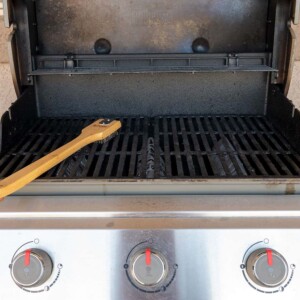
How to Clean a Gas Grill
Equipment
- paper towels
- water in spray bottle
- nitrile gloves
Ingredients
- gas grill
Instructions
- After Every Cook: After you remove your food, heat your grill to high for 5-15 minutes. Use a wire grill brush to scrape off any build up from the grates. For stuck on food, spritz the grates with water from a spray bottle. Use paper towels and warm soapy water to wipe down the exterior and shelves.
- After Every 3-5 Cooks: Check the grease collector and tray. Replace the drip pan or reline the tray with foil, as needed.
- 1-2 Times Per Year: Thoroughly clean the grates with a grill stone. Remove the grates. Scrape built up debris from the bars that cover the burners and the walls of the grill. Use a wire brush to gently clean the burner tubes. Using paper towels, wipe any residue inside the box through the grease trap and dispose of it.
Notes
Nutrition information is automatically calculated, so should only be used as an approximation.

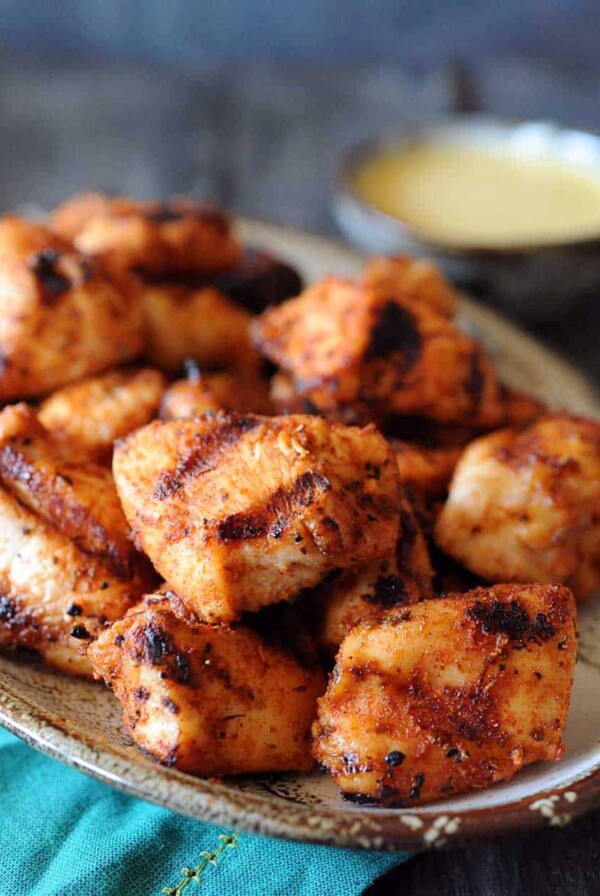

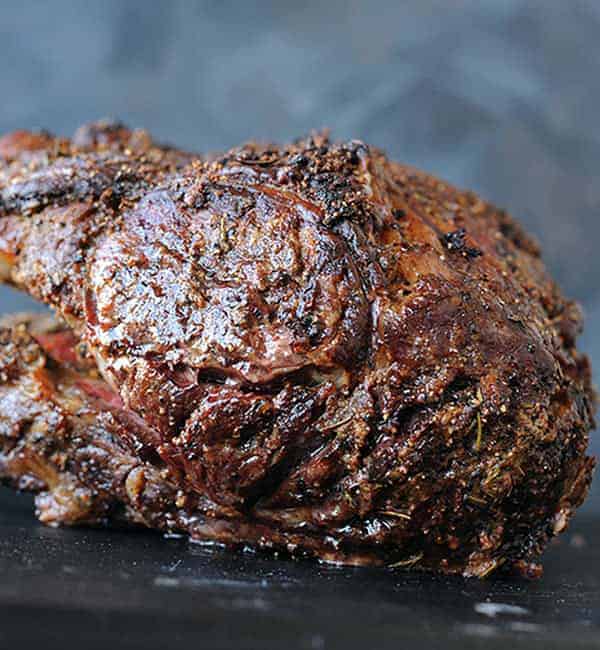
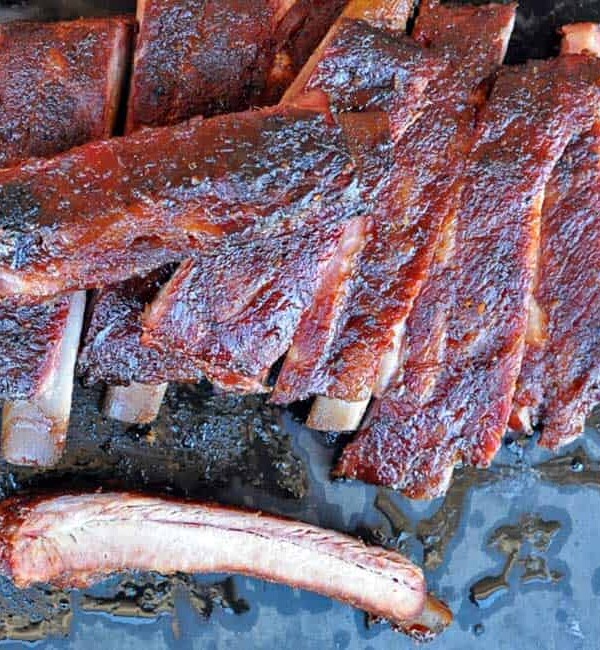









I appreciate your advice about moving the grill off the patio and onto a rocky area because greasy BBQ debris will fly around when we clean it. My mom is particularly careful with the newly built patio. I will make note of this cleaning tip for when we buy a barbeque grill this month.